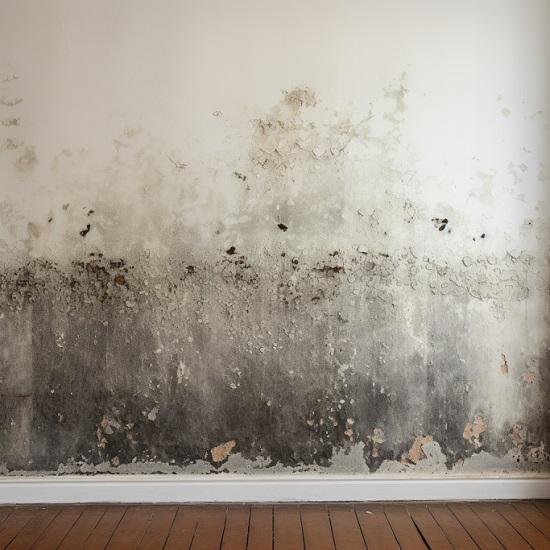Testing Air Quality After Mold Remediation
Wiki Article
Specialist Tips for Article Mold Removal Success
In the realm of mold remediation, efficiently eradicating mold is only half the fight; truth challenge hinges on preventing its reappearance. Post-remediation initiatives play an important function in making sure a mold-free atmosphere in the long-term. By adhering to skilled pointers and ideal techniques, people can guard their rooms versus mold and mildew resurgence and maintain a healthy and balanced interior setting. It remains in this stage of the removal procedure that interest to information and positive actions truly make a difference.
Monitor Moisture Levels On A Regular Basis
Routine tracking of humidity levels is essential in guaranteeing the efficiency of blog post mold and mildew remediation initiatives. After finishing mold remediation treatments, maintaining optimum moisture levels is crucial to avoid mold and mildew re-growth and guarantee a healthy and balanced interior environment. Surveillance moisture levels permits for early detection of any spikes or variations that can possibly result in mold revival. High moisture degrees over 60% develop a favorable setting for mold to flourish, making routine keeping track of a proactive measure to avoid any type of future mold issues - Post Remediation Inspection near me.Furthermore, establishing a regular schedule for moisture checks, specifically in high-risk locations such as washrooms, cooking areas, and basements, is an aggressive approach to mold avoidance. By consistently keeping an eye on moisture levels, residential property proprietors can effectively minimize the threat of mold and mildew reoccurrence and preserve a healthy and balanced indoor environment post-remediation.
Conduct Thorough Inspections Post-Remediation
Complying with the completion of mold removal procedures, it is essential to conduct detailed inspections to validate the effectiveness of the removal procedure. These post-remediation inspections are important in making certain that the mold problem has actually been efficiently dealt with which there is no reappearance or continuing to be mold growth. Assessments need to be performed by qualified experts that have expertise in determining mold and examining interior air top quality.Throughout these examinations, various methods such as visual assessments, air sampling, and surface sampling may be employed to thoroughly assess the remediated areas. Visual assessments involve a comprehensive assessment of the facilities to look for any type of noticeable indications of mold and mildew growth or water damage. Air sampling assists in identifying the air-borne mold and mildew spore degrees, while surface area sampling can identify mold bits on surfaces.
Implement Correct Ventilation Methods
After making sure the efficiency of the mold removal process through thorough inspections, the next essential step is to concentrate on executing proper air flow strategies. Appropriate ventilation is Post Mold Remediation Report vital in avoiding mold and mildew reoccurrence by managing moisture levels and promoting air blood circulation.
Appropriate air flow not only aids in protecting against mold growth but also adds to the general wellness and convenience of occupants. By making sure sufficient air flow throughout the residential or commercial property, you can minimize the threat of mold regrowth and create a healthier living atmosphere.

Usage Mold-Resistant Products for Repair Works
To boost the long-term efficiency of mold and mildew removal initiatives, incorporating mold-resistant products for repair services is important in mitigating the threat of future mold development. Mold-resistant materials are made to stand up to moisture and prevent mold development, making them a vital selection for areas vulnerable to dampness and moisture. When fixing areas influenced by mold, making use of materials such as mold-resistant drywall, mold-resistant paints, and mold-resistant caulking can aid avoid mold and mildew recurrence.Mold-resistant drywall is an exceptional choice to traditional drywall in locations like bathrooms and cellars where wetness degrees are greater. This sort of drywall has an unique coating that withstands mold and mildew development also when revealed to damp problems. Additionally, using mold-resistant paints consisting of antimicrobial representatives can additionally prevent mold growth on ceilings and walls.
In locations where dampness is common, such as cooking areas and shower rooms, making use of mold-resistant caulking around windows, sinks, and bathtubs can aid secure out water and stop mold from taking hold in cracks and holes. By spending in these mold-resistant materials during repairs post-remediation, you can substantially decrease the possibility of future mold issues and keep a healthier indoor setting.
Maintain Sanitation and Address Water Issues
After mold removal, it is critical to maintain a clean atmosphere to stop the regrowth of mold and mildew. Leakages, water intrusion, or high humidity levels can produce the best reproduction ground for mold and mildew, so it is vital to fix any type of water-related troubles quickly.To maintain cleanliness, think about using HEPA filters in vacuum cleaners and air purifiers to catch mold spores and avoid their flow airborne. Making certain proper ventilation in areas prone to moisture buildup, such as bathrooms and kitchens, can aid maintain moisture levels in check. By remaining cautious regarding cleanliness and attending to water problems quickly, you can efficiently avoid mold and mildew reinfestation and keep a healthy and balanced interior setting.
Verdict

In the realm of mold and mildew remediation, efficiently eradicating mold and mildew is only half the fight; the real challenge lies in avoiding its reappearance. After finishing mold remediation procedures, preserving optimum moisture degrees is important to protect against mold and mildew re-growth and ensure a healthy interior atmosphere. High moisture degrees over 60% develop a helpful setting for mold and mildew to grow, making normal monitoring a proactive measure to avoid any type of future mold problems.
To enhance the long-lasting efficiency of mold remediation initiatives, including mold-resistant products for fixings is crucial in mitigating the risk of future mold and mildew development. After mold and mildew remediation, it is important to maintain a clean environment to avoid the regrowth of mold and mildew.
Report this wiki page